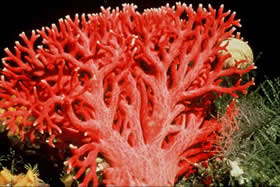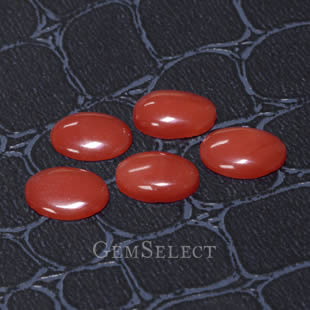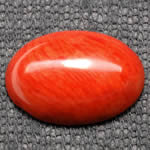Precious Coral Gemstones
 |
| Natural Red Coral |
There is a small but important class of gemstones that are not really stones at all. Rather than being minerals with a crystalline structure, their origin is organic - they formed from biological processes, whether animal or vegetable. The class of organic gems is small but includes a number of unusual varieties that are important in the gem trade; amber, coral, jet, ivory and pearl.
Coral is a branching skeleton-like structure created by tiny marine animals called coral polyps. The coral gem, particularly red coral, is associated with reef-forming varieties, with the most valuable types found in the Mediterranean, the Red Sea, and along the coasts of Japan. These gems can display a range of colors, including bright-red, dark-red, orange-red, orange-pink, pink, white, blue, or black. While unworked coral appears dull, polishing reveals an appealing vitreous luster that enhances its beauty. Browse through our assortment of coral gemstone for sale.

Precious Coral Cabochons
Precious coral is a species of coral that grows on rocky sea beds, typically in dark environments, either in the depths of the ocean or in dark caverns. The coral skeleton is composed of hard calcium carbonate colored by carotenoid pigments. Coral stone typically exhibits a range of warm reddish-pink colors ranging from salmon-pink to deep-red. The word 'coral' is also used to refer to such colors. However, gem-quality coral is also found in white, black and blue.
 |
| Red Coral Cab |
Due to its intense coloration and luster, precious coral has been harvested since antiquity for decorative use. Coral jewelry has been found in ancient Egyptian and prehistoric European burials. Most precious coral is harvested in the Mediterranean Sea, especially in Sardinia. Deposits are also found in the Pacific, in Japan, Taiwan and Australia.
Since coral is an organic material, it is not especially durable. Coral gemstone is reasonably hard, but not nearly as hard as many gemstones; it has a rating of only 3 to 4 on the Mohs scale. Coral is sensitive to heat, acid and high temperatures, and the color can fade slightly with wear. White and red coral has a specific gravity or density of 2.60 to 2.70 and a refractive index of 1.486 to 1.658. Coral is translucent to opaque.
Coral is polished with fine-grained sandstone and emery, and then finely polished with felt-wheels. It is used for beads, cabochons, ornamental objects and sculptures. You will sometimes see branch-like pieces that are drilled and strung on spiky necklaces.
|
